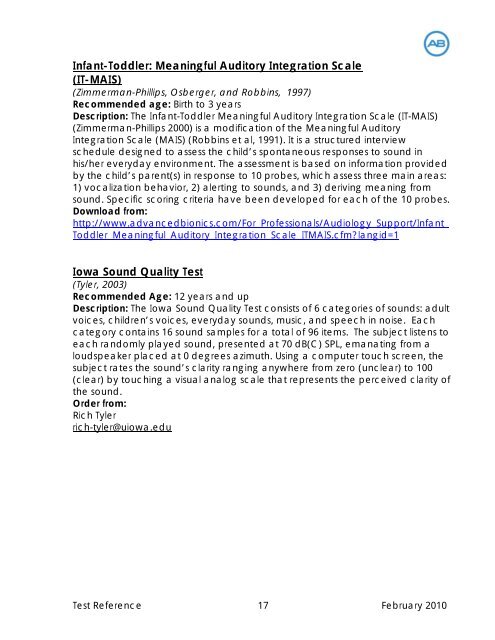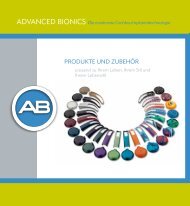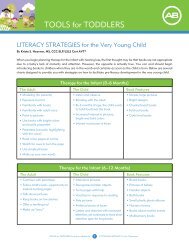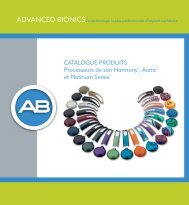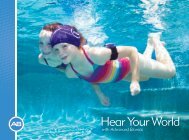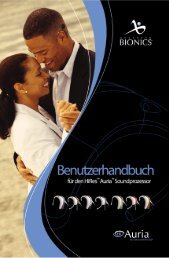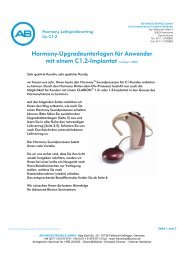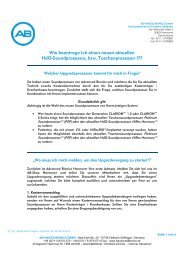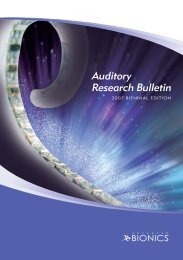Test Reference for Cochlear Implants - The ... - Advanced Bionics
Test Reference for Cochlear Implants - The ... - Advanced Bionics
Test Reference for Cochlear Implants - The ... - Advanced Bionics
Create successful ePaper yourself
Turn your PDF publications into a flip-book with our unique Google optimized e-Paper software.
Infant-Toddler: Meaningful Auditory Integration Scale<br />
(IT-MAIS)<br />
(Zimmerman-Phillips, Osberger, and Robbins, 1997)<br />
Recommended age: Birth to 3 years<br />
Description: <strong>The</strong> Infant-Toddler Meaningful Auditory Integration Scale (IT-MAIS)<br />
(Zimmerman-Phillips 2000) is a modification of the Meaningful Auditory<br />
Integration Scale (MAIS) (Robbins et al, 1991). It is a structured interview<br />
schedule designed to assess the child’s spontaneous responses to sound in<br />
his/her everyday environment. <strong>The</strong> assessment is based on in<strong>for</strong>mation provided<br />
by the child’s parent(s) in response to 10 probes, which assess three main areas:<br />
1) vocalization behavior, 2) alerting to sounds, and 3) deriving meaning from<br />
sound. Specific scoring criteria have been developed <strong>for</strong> each of the 10 probes.<br />
Download from:<br />
http://www.advancedbionics.com/For_Professionals/Audiology_Support/Infant_<br />
Toddler_Meaningful_Auditory_Integration_Scale_ITMAIS.cfm?langid=1<br />
Iowa Sound Quality <strong>Test</strong><br />
(Tyler, 2003)<br />
Recommended Age: 12 years and up<br />
Description: <strong>The</strong> Iowa Sound Quality <strong>Test</strong> consists of 6 categories of sounds: adult<br />
voices, children’s voices, everyday sounds, music, and speech in noise. Each<br />
category contains 16 sound samples <strong>for</strong> a total of 96 items. <strong>The</strong> subject listens to<br />
each randomly played sound, presented at 70 dB(C) SPL, emanating from a<br />
loudspeaker placed at 0 degrees azimuth. Using a computer touch screen, the<br />
subject rates the sound’s clarity ranging anywhere from zero (unclear) to 100<br />
(clear) by touching a visual analog scale that represents the perceived clarity of<br />
the sound.<br />
Order from:<br />
Rich Tyler<br />
rich-tyler@uiowa.edu<br />
<strong>Test</strong> <strong>Reference</strong> 17 February 2010


